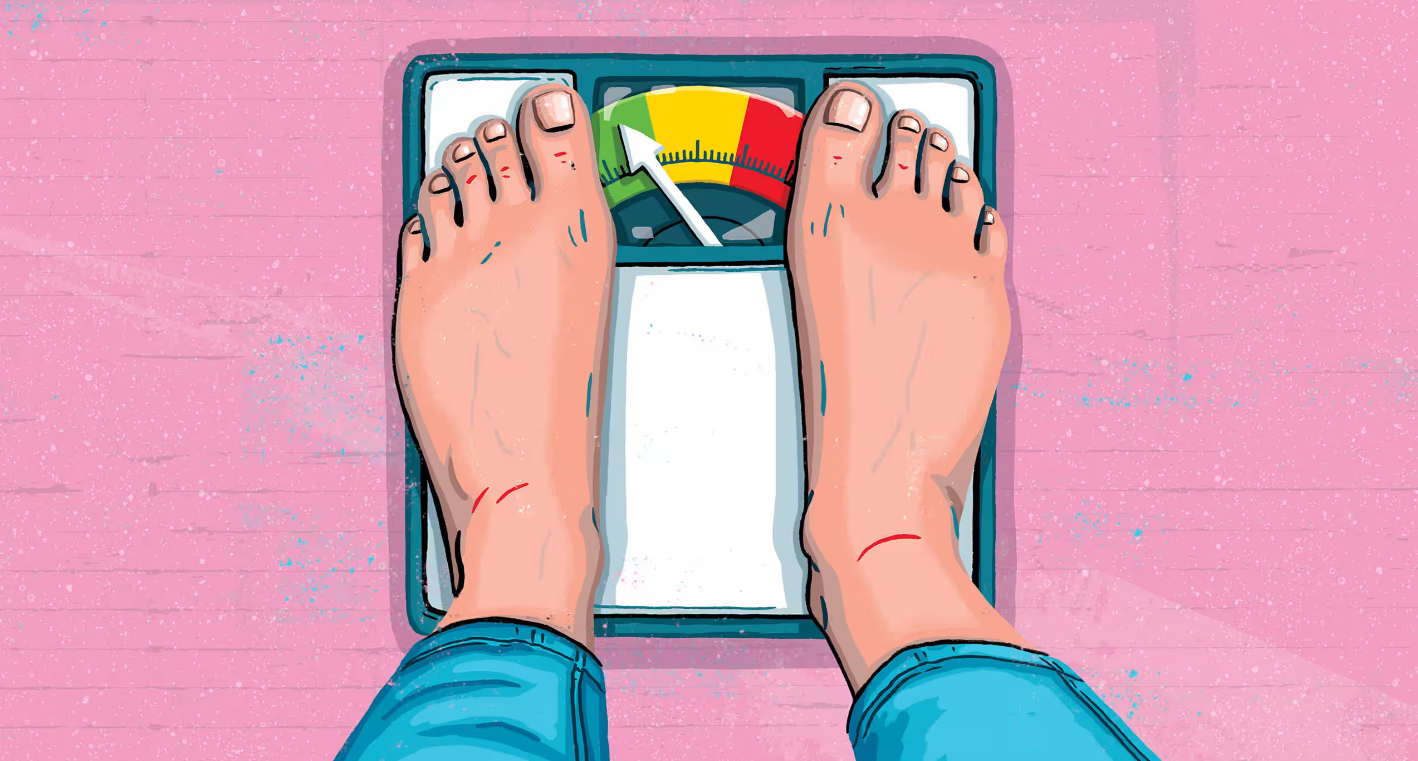Eva Bee/The Observer
It’s 10 years since Professor Roy Taylor revolutionized treatment for type 2 diabetes with a groundbreaking study that showed the disease could be reversed through rapid weight loss. Until his research was published, type 2 diabetes was thought to be an incurable, lifelong condition. Now, for many people, we know it is not.
But his achievements – and the thousands of people he has cured – are not something he dwells upon. “I’m in a very lucky position of being able to do this research,” he says, “which really extends what I’ve been doing as a doctor throughout my life.”
He laughs at the suggestion that he must occasionally marvel at his own success: “No, no,” he chuckles. “Lots of occupations make a useful contribution to society. I wouldn’t set myself apart.” Modest words for a man whose “useful contribution to society” has given hope to the 3.9m people diagnosed with the condition in the UK ….Continue reading…
By: Donna Ferguson
Source: How to cure type 2 diabetes – without medication | Diabetes | The Guardian
.
Critics:
Drugs used in diabetes treat diabetes mellitus by altering the glucose level in the blood. With the exception of insulin, most GLP receptor agonists (liraglutide, exenatide, and others), and pramlintide, all are administered orally and are thus also called oral hypoglycemic agents or oral antihyperglycemic agents.
There are different classes of anti-diabetic drugs, and their selection depends on the nature of diabetes, age, and situation of the person, as well as other factors. Diabetes mellitus type 1 is a disease caused by the lack of insulin. Insulin must be used in type 1, which must be injected. Diabetes mellitus type 2 is a disease of insulin resistance by cells.
Type 2 diabetes mellitus is the most common type of diabetes. Treatments include agents that (1) increase the amount of insulin secreted by the pancreas, (2) increase the sensitivity of target organs to insulin, (3) decrease the rate at which glucose is absorbed from the gastrointestinal tract, and (4) increase the loss of glucose through urination.
Several groups of drugs, mostly given by mouth, are effective in type 2 diabetes, often in combination. The therapeutic combination in type 2 may include several insulin isoforms or oral antihyperglycemic agents. As of 2020, 23 unique antihyperglycemic drug combinations were approved by the FDA.
The first triple combination of oral anti-diabetics was approved in 2019, consisting of metformin, saxagliptin, and dapagliflozin. Another triple combination approval for metformin, linagliptin, and empagliflozin followed in 2020. Insulin is usually given subcutaneously, either by injections or by an insulin pump. In acute care settings, insulin may also be given intravenously.
Insulins are typically characterized by the rate at which they are metabolized by the body, yielding different peak times and durations of action. Faster-acting insulins peak quickly and are subsequently metabolized while longer-acting insulins tend to have extended peak times and remain active in the body for more significant periods.
Examples of rapid-acting insulins (peak at ~1 hour) are:
- Insulin lispro (Humalog)
- Insulin aspart (Novolog)
- Insulin glulisine (Apidra)
Examples of short-acting insulins (peak 2–4 hours) are:
- Regular insulin (Humulin R, Novolin R)
- Prompt insulin zinc (Semilente)
Examples of intermediate-acting insulins (peak 4–10 hours) are:
- Isophane insulin, neutral protamine Hagedorn (NPH) (Humulin N, Novolin N)
- Insulin zinc (Lente)
Examples of long-acting insulins (duration 24 hours, often without peak) are:
- Extended insulin zinc insulin (Ultralente)
- Insulin glargine (Lantus)
- Insulin detemir (Levemir)
- Insulin degludec (Tresiba)
Insulin degludec is sometimes classed separately as an “ultra-long” acting insulin due to its duration of action of about 42 hours, compared with 24 hours for most other long-acting insulin preparations.
As a systematic review of studies comparing insulin detemir, insulin glargine, insulin degludec and NPH insulin did not show any clear benefits or serious adverse effects for any particular form of insulin for nocturnal hypoglycemia, severe hypoglycemia, glycated hemoglobin A1c, non-fatal myocardial infarction/stroke, health-related quality of life or all-cause mortality.
The same review did not find any differences in effects of using these insulin analogues between adults and children. Most oral anti-diabetic agents are contraindicated in pregnancy, in which insulin is preferred. Insulin is not administered by other routes, although this has been studied. An inhaled form was briefly licensed but was subsequently withdrawn. Insulin sensitizers address the core problem in type 2 diabetes – insulin resistance.
Biguanides reduce hepatic glucose output and increase uptake of glucose by the periphery, including skeletal muscle. Although it must be used with caution in patients with impaired liver or kidney function, metformin, a biguanide, has become the most commonly used agent for type 2 diabetes in children and teenagers. Among common diabetic drugs, metformin is the only widely used oral drug that does not cause weight gain. Typical reduction in glycated hemoglobin (A1C) values for metformin is 1.5–2.0%
- Metformin (Glucophage) may be the best choice for patients who also have heart failure, but it should be temporarily discontinued before any radiographic procedure involving intravenous iodinated contrast, as patients are at an increased risk of lactic acidosis.
- Phenformin (DBI) was used from 1960s through 1980s, but was withdrawn due to lactic acidosis risk.
- Buformin also was withdrawn due to lactic acidosis risk.
Thiazolidinediones (TZDs), also known as “glitazones,” bind to PPARγ, peroxisome proliferator activated receptor γ, a type of nuclear regulatory protein involved in transcription of genes regulating glucose and fat metabolism. These PPARs act on peroxisome proliferator responsive elements (PPRE). The PPREs influence insulin-sensitive genes, which enhance production of mRNAs of insulin-dependent enzymes.
The final result is better use of glucose by the cells. These drugs also enhance PPAR-α activity and hence lead to a rise in HDL and some larger components of LDL. Typical reductions in glycated hemoglobin (A1C) values are 1.5–2.0%. Some examples are:
- Rosiglitazone (Avandia): the European Medicines Agency recommended in September 2010 that it be suspended from the EU market due to elevated cardiovascular risks.
- Pioglitazone (Actos): remains on the market but has also been associated with increased cardiovascular risks.
- Troglitazone (Rezulin): used in 1990s, withdrawn due to hepatitis and liver damage risk.
Multiple retrospective studies have resulted in a concern about rosiglitazone’s safety, although it is established that the group, as a whole, has beneficial effects on diabetes. The greatest concern is an increase in the number of severe cardiac events in patients taking it. The ADOPT study showed that initial therapy with drugs of this type may prevent the progression of disease, as did the DREAM trial.
The American Association of Clinical Endocrinologists (AACE), which provides clinical practice guidelines for management of diabetes, retains thiazolidinediones as recommended first, second, or third line agents for type 2 diabetes mellitus, as of their 2019 executive summary, over sulfonylureas and α-glucosidase inhibitors.
However, they are less preferred than GLP-1 agonists or SGLT2 inhibitors, especially in patients with cardiovascular disease (which liraglutide, empagliflozin, and canagliflozin are all FDA approved to treat). Concerns about the safety of rosiglitazone arose when a retrospective meta-analysis was published in the New England Journal of Medicine.
There have been a significant number of publications since then, and a Food and Drug Administration panel voted, with some controversy, 20:3 that available studies “supported a signal of harm”, but voted 22:1 to keep the drug on the market. The meta-analysis was not supported by an interim analysis of the trial designed to evaluate the issue, and several other reports have failed to conclude the controversy.
This weak evidence for adverse effects has reduced the use of rosiglitazone, despite its important and sustained effects on glycemic control. Safety studies are continuing. In contrast, at least one large prospective study, PROactive 05, has shown that pioglitazone may decrease the overall incidence of cardiac events in people with type 2 diabetes who have already had a heart attack.
“Diabetes Blue Circle Symbol”.
“Diagnosis of Diabetes and Prediabetes”.
Metabolic bariatric surgery and type 2 diabetes mellitus: an endocrinologist’s perspective”.
Pathophysiology of type 2 diabetes mellitus in youth: the evolving chameleon”.
Dietary fats and prevention of type 2 diabetes”.
Maternal micronutrient deficiency, fetal development, and the risk of chronic disease”.
Human gut microbes impact host serum metabolome and insulin sensitivity”.
Does lack of sleep cause diabetes?”.
Sugar-sweetened beverages, obesity, type 2 diabetes mellitus, and cardiovascular disease risk”.
“White rice consumption and risk of type 2 diabetes: meta-analysis and systematic review”.
Can persistent organic pollutants and plastic-associated chemicals cause cardiovascular disease?”.
Share this:
- Click to email a link to a friend (Opens in new window)
- Click to share on Reddit (Opens in new window)
- Click to share on Telegram (Opens in new window)
- Click to share on Stumbleupon (Opens in new window)
- Click to share on Tumblr (Opens in new window)
- Click to share on WhatsApp (Opens in new window)
- More
- Click to share on Pocket (Opens in new window)
- Click to share on Pinterest (Opens in new window)
- Click to share on AddToAny (Opens in new window)
- Click to share on LinkedIn (Opens in new window)
- Click to share on Twitter (Opens in new window)
- Click to share on Facebook (Opens in new window)
- Click to share on Delicious (Opens in new window)





Leave a Reply